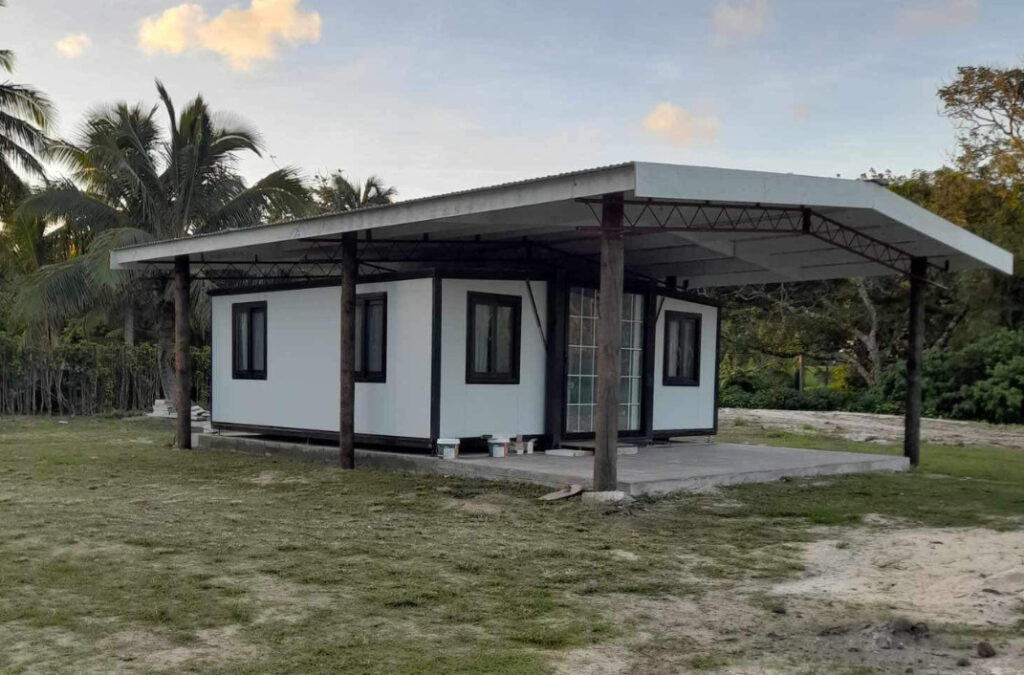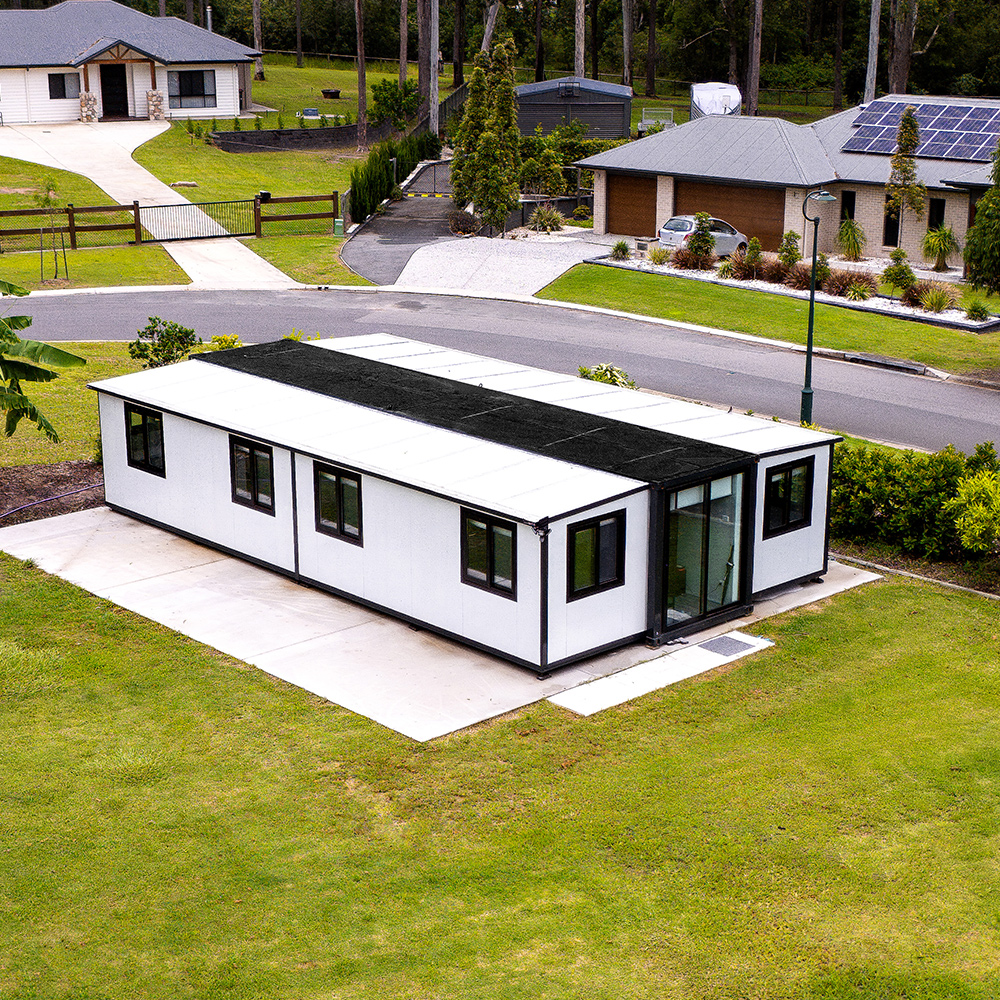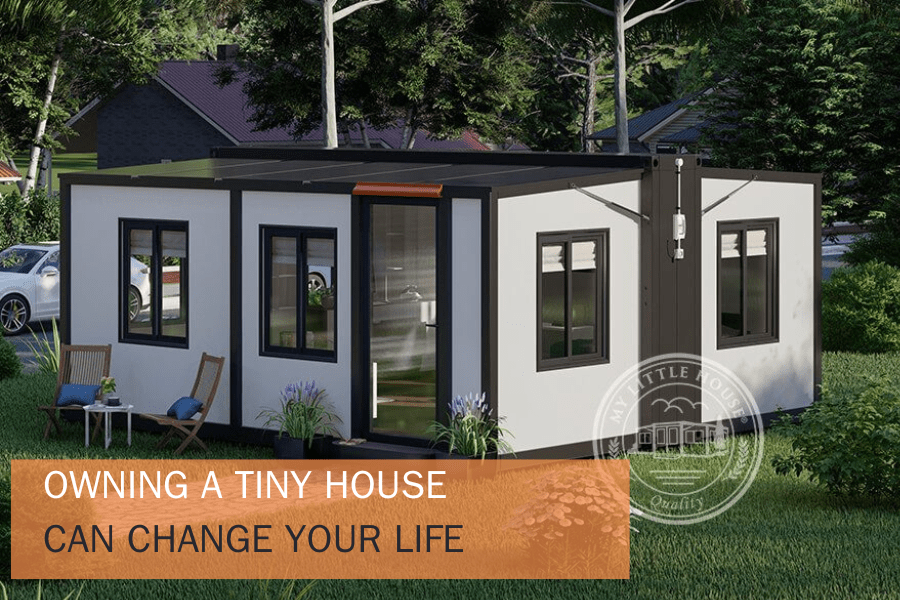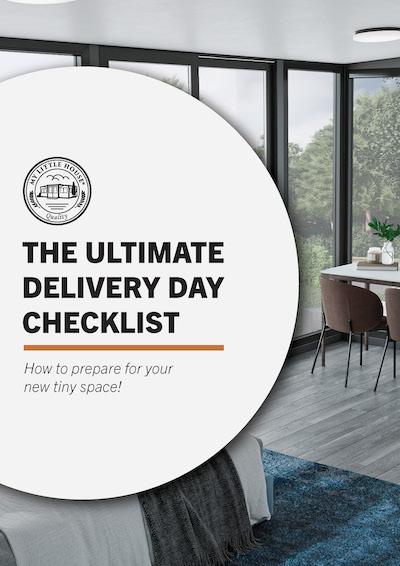Tiny living is growing in popularity in Australia as more people are choosing to embrace sustainable and minimalist lifestyles.
Tiny homes also offer financial freedom, giving couples and families an affordable housing option amidst the current cost of living crisis.
In this post, we’re sharing our expertise on tiny living, from how much a tiny home costs to factors influencing this cost to help you make an informed decision.
How much does a tiny home cost in Australia?
The total cost of a tiny home in Australia can range from $59,000 to over $150,000. This wide price range depends on various factors such as the size, materials used, type of foundation, the inclusion of utilities, and whether you are opting for a prefabricated or custom-built home. Let’s explore these elements in detail to better understand how they impact the overall cost.
Size of the Tiny Home
One of the most obvious factors that influence the cost of a tiny home is its size. Tiny homes in Australia typically range from 15 to 50 square metres. As the size increases, so do the costs associated with construction materials, labour, and permits.
Smaller homes (15-25 square metres) are often the most affordable option. Their reduced footprint means fewer materials and labour are needed, making these tiny homes more budget-friendly.
Larger homes (25-50 square metres) provide more space, but can cost more. Larger homes require more materials, and the additional space might demand more complex designs, adding to the cost.
Materials Used
The choice of materials plays a significant role in determining the cost of your tiny home. Some materials are more affordable but may not last as long, while others offer greater durability and energy efficiency at a higher price.
Choosing low-cost materials such as plywood, reclaimed wood, and corrugated metal can help to significantly lower your building costs, keeping your home affordable. Mid-range materials like weatherboards, composite panels, and insulated walls can start to increase costs.
For those looking to build an eco-friendly or luxurious tiny home, using sustainable or high-end materials like double-glazed windows, solar panels, and hardwood timber will increase the cost significantly.
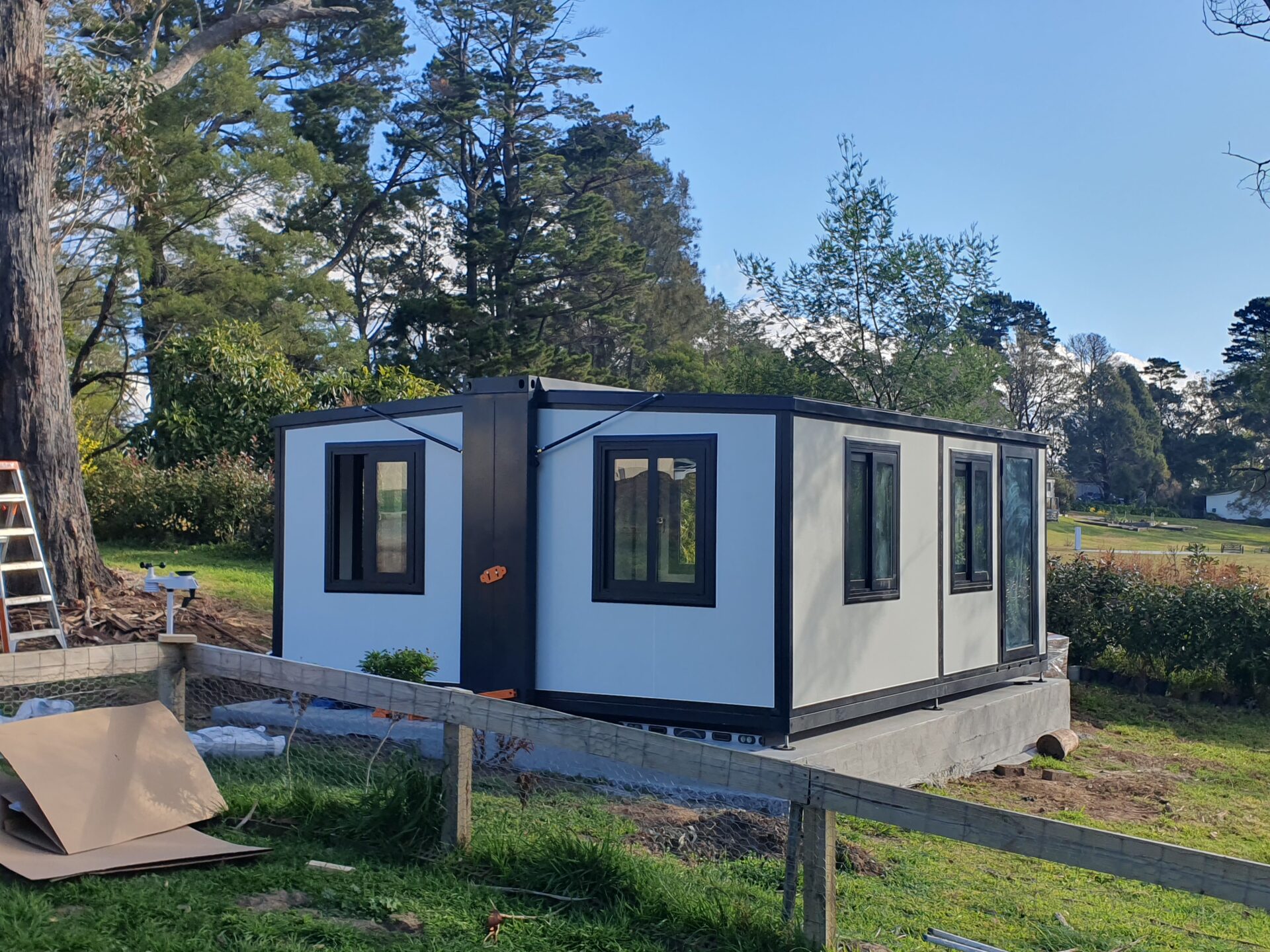
Prefab or Custom Tiny Home
Whether you choose a prefabricated tiny home or a custom-built one will also influence the final price. Each option has its own pros and cons, with prefabricated homes generally being more affordable and faster to build than custom designs.
Prefab tiny homes are built in factories and transported to your chosen site. These homes usually come in standard designs and sizes, with prices depending on the complexity and finishes. The biggest advantage of a prefab home is its cost-effectiveness and fast construction timeline. You’ll know the final price upfront, making it easier to stick to a budget. For example, our Studio, Haven and Oasis prefab tiny homes offer comfort at an affordable price.
If you want to design your tiny home from scratch, be prepared to pay a premium. Custom homes offer more flexibility in terms of design and features, but the cost can vary significantly based on your specifications. A custom tiny home can cost more depending on the size, materials, and features you choose.
Foundation Type
The type of foundation you choose for your tiny home is another major cost factor. Tiny homes can be built on a trailer (making them mobile) or on a fixed foundation, which adds to their versatility.
A trailer-mounted tiny home is often less expensive than one on a traditional foundation because you eliminate the cost of laying concrete or other permanent foundation materials. You can expect to pay around $9,000 to $22,000 for a high-quality trailer, depending on its size and features.
If you want a tiny home with a permanent foundation, you’ll need to factor in additional costs for site preparation, pouring concrete, or constructing a pier foundation. The cost for a permanent foundation can depend on the location and ground conditions.
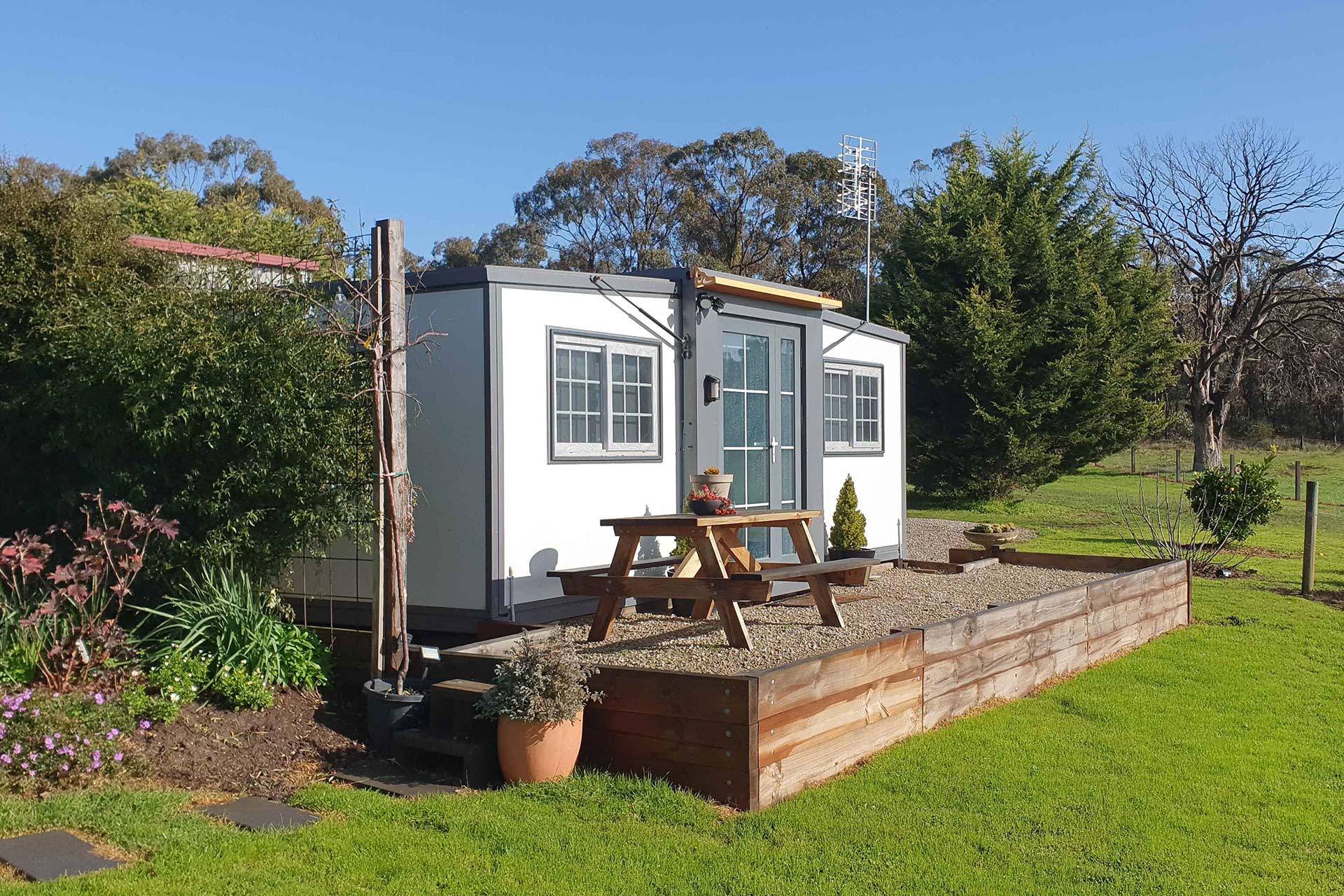
Location and Site Costs
Where you plan to park or place your tiny home can also affect your overall budget. Site preparation, zoning laws, and local regulations vary depending on the location.
Land prices and fees in cities or suburban areas are generally higher than in rural settings. Finding a space to park your tiny home in urban areas might require renting land or purchasing a small plot, which can add thousands to your budget.
In more remote locations, land is often cheaper, and local councils may be more lenient with zoning laws. However, rural properties might require additional investment in utilities like septic systems, water tanks, and solar power, which can increase costs.
Amenities and Utilities
Your choice of amenities and access to utilities can significantly impact the total cost of your tiny home. This includes access to water, electricity, gas, and waste management systems. If you are connecting your tiny home to existing infrastructure (such as water, electricity, and sewage), you may face connection fees.
If you choose to go off-grid, this can add both upfront and ongoing costs. For example, you’ll need to consider solar panels and battery systems, composting toilets, and water tanks and filtration systems. While off-grid solutions are more expensive initially, they can save money in the long run by reducing or eliminating utility bills.
Fixtures and Finishes
The level of luxury you want in your tiny home will also affect the price. Fixtures such as cabinetry, lighting, plumbing, and finishes like flooring and countertops can vary widely in cost.
Standard fixtures such as laminate countertops, vinyl flooring, and basic cabinetry can keep your costs lower. If you’re aiming for a high-end tiny home with hardwood floors, stone countertops, and custom cabinetry, the cost can quickly rise.
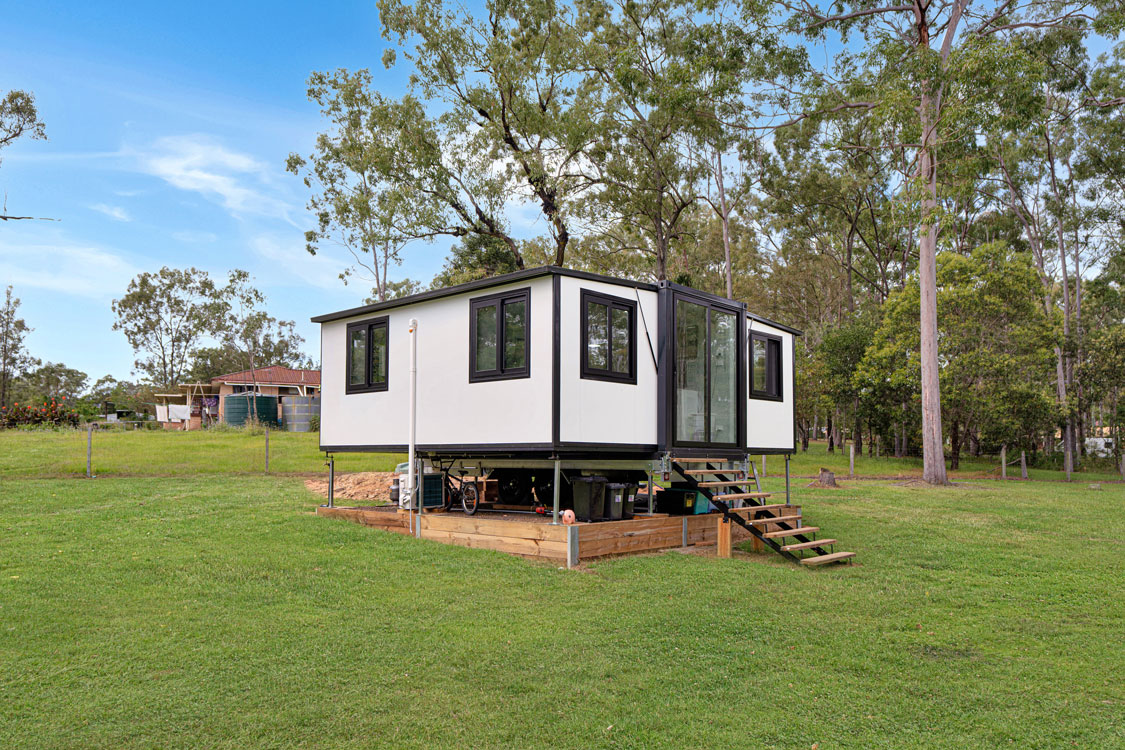
Approvals and Permits
Finally, before you start building your tiny home, you will need to account for the costs of obtaining permits and approvals. These costs vary depending on the council area in which you plan to place your tiny home.
For example, you may need to get a permit to build your home, depending on the complexity of your project and the local council’s regulations. Even if you choose a prefab home, you still may need to hire a building surveyor to assess your tiny home and ensure it complies with local building codes.
It’s important to check local regulations, as tiny homes in Australia often fall into a grey area of the law. Some councils may have specific regulations for mobile homes, while others treat them like caravans or temporary dwellings.
For a tiny home that is fully compliant with Class 1A certification and ticks all the boxes, take a look at our Sucasa. Available now!
Final Thoughts
Considering starting your tiny home adventure?
We also invite you to explore our wide range of tiny homes, tailored to suit your unique lifestyle.
Shop our extensive range online, or visit our showroom today.
